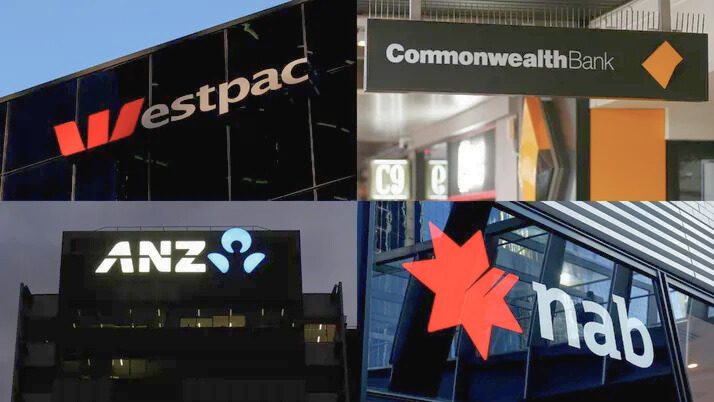Your selected savings accounts

Read reviews and learn more about P&N Bank savings accounts
Go to site
Read reviews and learn more about BCU Bank savings accounts
Go to site


Read reviews and learn more about Rabobank savings accounts
Go to site
Read reviews and learn more about Westpac savings accounts
Go to site
Read reviews and learn more about ING savings accounts
Go to site
Read reviews and learn more about ING savings accounts
Go to site
Read reviews and learn more about BCU Bank savings accounts
Go to site
Read reviews and learn more about P&N Bank savings accounts
Go to site
Read reviews and learn more about ubank savings accounts
Go to site
Read reviews and learn more about Westpac savings accounts
Go to site
Read reviews and learn more about BCU Bank savings accounts
Go to site
Read reviews and learn more about P&N Bank savings accounts
Go to siteYour selected savings accounts
Savings accounts come in many shapes and sizes, start comparing here based on your needs.
Search the Mozo Database
Browse all savings accounts in Mozo's comparison database.
A high-interest savings account allows you to deposit cash and earn above-average interest rates. Among these are a few different types to choose from:
Bonus savings accounts offer higher interest than standard savings accounts – but only if you meet certain conditions each month. These might include:
They’re a popular choice for savers who want to stay on track with regular deposits and can commit to the account’s terms. Just keep in mind that if you miss the conditions, you'll typically earn a much lower base rate that month.
Some bonus savers are designed for specific goals – like short-term savings or teaching kids to save – while others suit long-term savers chasing the best possible return. Make sure the bonus conditions suit your savings habits.
Most savings accounts calculate earned interest daily, based on your closing balance. It is then paid out monthly – this is known as compound interest. So, the more you deposit into your savings account to grow your balance and the less you withdraw, the more interest you earn on your money.
Generally speaking, savings account base interest rates are variable so they can fluctuate over time, which is why it’s important to compare rates regularly. If you want to do some old school maths, here’s how to calculate interest on a savings account. If you'd prefer to save time, check out our savings calculator.
Every year, Mozo’s expert judges compare hundreds of savings accounts to find the best value accounts for different saver scenarios as part of the Mozo Experts Choice Awards. Only the top ranked accounts are awarded. 2025's winners are:
Check out all the Mozo Experts Choice Savings Awards 2025 winners. We also highlight award winning products in our comparison tables (top of the page).
Opening up a savings account is a pretty simple process, although there are a couple of things you’ll want to keep in mind.
To start an account you’ll need to:
In general, most savings accounts don’t have a specific limit on how much you can deposit. However, providers usually have balance tiers that determine the interest rate earned. This means that once your balance goes over a certain amount, the interest rate will either drop or increase depending on the provider.
Yes, interest earned is considered the same as income and you’ll need to declare this on your annual tax return.
No, high interest savings accounts are usually only available online or via an app. But you can (or may even be required to) have a transaction account when you sign up which should come with a debit or ATM card.
Both savings and transaction accounts are options you have for keeping your money with a banking provider. Transaction or bank accounts are usually used for your everyday spending and as such these usually pay little or no interest. But they do come with a debit or ATM card.
Meanwhile, savings accounts are designed to help you reach your savings goals. They usually have higher interest rates and are accessed via online banking or via a banking app. Keep in mind that they do not come with an ATM card.
High interest savings accounts are any account that has an above-average rate. Bonus saver accounts, meanwhile, are accounts where providers offer a higher interest rate as an extra incentive for fulfilling certain conditions.
You may find yourself divided between investing your money in a savings account or a term deposit. Here are some key factors to consider:
Read our guide on term deposits versus savings accounts if you'd like a more detailed explainer.
A kids savings account is a bank account designed specifically for children, often offering higher interest rates and features that encourage good saving habits from a young age. These accounts typically have no monthly fees and may include bonus interest if certain conditions are met, like making regular deposits. Want to compare top-performing kids accounts? Head to our kids savings account hub for the latest rates, features and expert picks.
Yes, the Australian government guarantees deposits of up to $250,000 with any one Authorised Deposit-taking Institution (ADIs) under the financial claims scheme. This means the government will reimburse any amount of $250,000 or under should the ADI (bank, credit union, etc.) fail.
If you’ve saved up more than $250,000, you’d need to keep smaller amounts of up to $250,000 in different banks for all your funds to be covered by the government's guarantee.
Crunch the numbers with our range of savings calculators! See all calculators
Learn more about savings accounts and managing your budget in our helpful guides. See all
All the latest savings account news and top tips to help you manage your money. See all



.jpg)


We compare savings accounts from the following well-known brands and many more See all